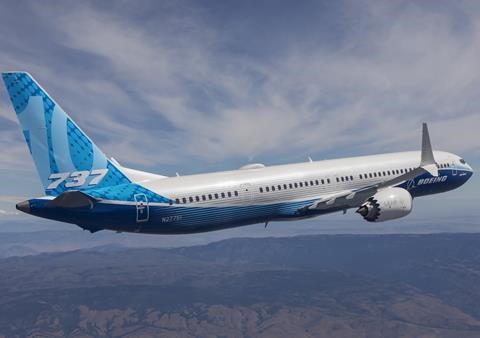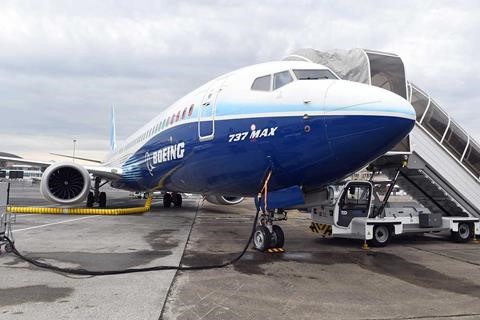BOEING 737 MAX 10—THE MAZE explained.

FlightGlobal’s Jon Hemmerdinger writes about the recent FAA Type Certification Authorization for the Boeing 737 Max 10, permission to begin flight tests with FAA inspectors aboard. The author also cites Boeing’s existing LOGBOOK OF MORE THAN 400 FLIGHTS AND NEARLY 1,000 HOURS (about 1 and a half months) in the air of flight time since 2021. He insinuates that the 2019-2020 grounding of the Max 8 and Max 9 2019-2020 resulted in more rigorous assessment by the FAA technical staff. All sadly true. However, the correspondent did not mention some possible other factors that might have contributed to this 2 year review.
A series of random, unrelated acts have created a MAZE that is the FAA Aircraft Certification Service and the associated process.
HERE ARE FAA INITIATED CHANGES THAT HAVE CONFUSED AND LIKELY DELAYED ALL CERTIFICATIONS:
- FIRST REORGANIZATION
On 23, 2017, as the Director explained:
“ …the Aircraft Certification Service (AIR) officially realigned into a functionally based organizational structure. … Building this functional infrastructure enables AIR Transformation, our comprehensive approach to increasing efficiency and effectiveness, and institutionalizes improvements already in progress. It is an important step in realizing our future vision and full mission potential by:
• Encouraging early industry engagement and risk-based system surveillance to eliminate barriers from unnecessary FAA involvement during certification.
• Improving consistency and standardization by establishing single functional lines for 1) certification, 2) standards and 3) system oversight.
• Fostering innovation by engaging industry applicants early to understand new concepts and ensure a viable path to compliance. • Providing agility and adaptability to meet the challenges of the dynamic global aviation industry.
• Establishing business practices for utilizing metrics to determine efficacy of Industry/ FAA associated with compliance/safety and time to market. As a reminder, although this change eliminated the Directorate system, your existing points of contact continue to remain the same...We look forward to sharing more details about our progress as we move forward. DORENDA D. BAKER

FOR MORE INFORMATION:
Federal Register :: Aviation Safety Organization Changes
AIR is a geographically dispersed organization of “more than 1,400 employees working in FAA HEADQUARTERS in Washington, DC, 35 FIELD OFFICES ACROSS THE U.S., and two international offices located in Belgium and Singapore.” The well-intentioned change was a shock to many of these employees, not all of whom were weel equipped to deal with the new collaborative efficiency. Equally the certification professionals, who interface with these keepers of these safety criteria, were befuddled by the new geographic and responsibility dispersion.

II- CHANGE FROM PRESCRIPTIVE TO PERFORMANCE STANDARDS
Part of the reason for this altering of the AIR’s traditional structure was an evolutionary/revolutionary change in the agency’s certification standards. For decades, the staff had a checklist like set of criteria and could follow a simple process of reviewing the Type Certification tests. In 2016, the FAA shifted from prescriptive design requirements to performance-based safety regulations—specifying results but not prescribing methods to achieve them.
“With these performance-based standards, the FAA delivers on its promise to implement forward-looking, flexible rules that encourage innovation. Specifically, the new part 23 REVOLUTIONIZES STANDARDS FOR AIRPLANES weighing 19,000 pounds or less and with 19 or fewer passenger seats by replacing prescriptive requirements with performance-based standards coupled with consensus-based compliance methods for specific designs and technologies. The rule also adds new certification standards to address GA loss of control accidents and in-flight icing conditions.
This regulatory approach recognizes there is more than one way to deliver on safety. It offers a way for industry and the faa to collaborate on new technologies and to keep pace with evolving aviation designs and concepts.
The new rule responds to Congressional mandates that direct the FAA to streamline approval of safety advancements for small GA airplanes. It also addresses recommendations from the FAA’s 2013 Part 23 Reorganization Aviation Rulemaking Committee, which suggested a more streamlined approval process for safety equipment on those airplanes.”
{these Part 23 comments are equally applicable to Part 25 and other certification regulations.}
The new approach, performance assessment, required the FAA staff to use a radically different set of analyses, to evaluate more data and to interact with the TC applicant to find the relevant criteria. THIS JOB TASK ALTERATION DID NOT SIT WELL WITH THE EXISTING STAFF IN THE FIELD!!!
III –A NEW DIRECTOR OF AIR

Administrator Billy Nolen, almost days after his transfer from the head of the Aviation Safety organization, named Lirio Liu as the new Executive Director of Aircraft Certification Service. This was the third change in this critical leadership position since the Max 8 mess, the prescriptive/performance transition and the 2017 Reorganization. Her academic and work resume made her extremely well qualified for the position–


Of particular note, Ms. Liu’s FAA career includes stops in the field and headquarters certification functions plus work that taught her the inner machinations of the FAA executive service. That history created the electronic equivalent to the proverbial ROLODEX and thus a network of contacts she can call to address some hotspot in the AIR service.
IV—SECOND REORGANIZATION 2023
Since then, a new regime was released Aircraft Certification Service 2023 Reorganization. The AIR divisions have been working to reorganize and fine-tune AIR’s structure to align its people, work, and management chains with specific functions. The goals of these changes are to standardize and strengthen AIR’s focus on functional activities for Continued Operational Safety (COS), policy development, certification, and system oversight. Key organizational changes include the CREATION OF A NEW INTEGRATED CERTIFICATE MANAGEMENT DIVISION to focus on commercial airplanes and the engines that power them (14 CFR Part 121), CONSOLIDATION OF TWELVE AIRCRAFT CERTIFICATION OFFICES INTO THREE CERTIFICATION BRANCHES (East, Central, West), and enhancement of AIR’s focus on international engagement efforts across divisions.

Integrated Certificate Management Division
Issues design approvals, performs system oversight and evaluates continued operational safety for commercial airplanes and engines.
International Validation Branch
Responsible for all inbound and outbound validation activity for aviation products and appliances.
Military Certification Office (MCO) Branch
Supports military commercial derivative aircraft (MCDA) activities on behalf of the U.S. Armed Services.
In six years, the AIR has been subjected to a radical revision in the way that it assesses airworthiness (in particular a drastic alteration in the skill sets for the front-line staff), three changes in leaders and two Reorganizations. It is fair to speculate that the internal psyche is confusion with a dash of discomfort about “who’s doing what to whom.”

V—EXOGENOUS IMPACTS
a. Not unique to AIR, the COVID pandemic did not help in this period of transformation. Face-to-face conversations are the typical tool to reduce anxiety during this series of “enhancing safety.” Even if the career employee is not challenged by the new skill sets and/or structure, adjusting to these many variables without interpersonal contact can induce stress. That psychological phenomenon is not conducive to efficiency.
b. Collaterally, the medical crisis induced REMOTE WORK as the preferred status for many AIR employees. Though there is debate about the HR benefits of this virtual management, many –in particular Congress—assert that it is detrimental to smooth operation of the FAA, AIR, and other federal work.
c. During these years, aviation innovation has flourished. New technologies (energy, navigation, etc.), new forms of flight (UAS/drones, AAM/UAM/eVTOL, space) and a huge bow wave of TC applications have challenged the regulators. FAA budgets have sparce dollars for training and the individuals faced with this new designs/elements/science must approach their tasks with a high level of caution.
d. Most of the proponents of these new aeronautical projects are ENTREPRENEURIAL or less charitably impatient. Typically, these applicants have spent years developing their proposed aircrafts and have little tolerance for any delay. The MAX 8 disaster’s lesson to this set of people charged with determining airworthiness is THAT TAKING RISK IS NOT A PREFERRED OR ACCEPTABLE OPTION.

This chart illuminates how the TC process works, or more accurately HAS worked. The lines make it clear that much of the validation of the engineering judgments has derived from PAST EXPERIENCES. The essence of innovation is that it moves to the future ignoring, if not oblivious to, what happened before. This exacerbates the INNOVATOR/CAREER EMPLOYEE differences in perspective.
e. FOREIGN COMPETITION looms over this situation. Being first to market is a driving force in innovation. The GOOD HOUSEKEEPING GOLD SEAL of approval has been of sufficient value for a TC applicant to wait.

This assumption of the past is debatable and certification authorities around the world are not as reluctant to accept risk.
—
IN SUMMARY, the article about Boeing does not recognize the maze that is today’s AIR. The various internal and external pressures that have befallen the FAA’s Aircraft Certification Organization collectively have diminished its ability to move TC applications at a pace that meets its safety mandates and that is a reasonable expectation for approvals. The well-intentioned internal efforts to enhance AIR’s effectiveness have not been fully achieved due to unanticipated events.
—
Now more than ever, anyone seeking a Type Certificate is well advised to seek someone who knows the FAA, who understands the office’s technical strengths and weaknesses, who speaks their language and who have defined paths that meets the FAA’s expectations as well as their client needs.

FAA clears Boeing to start 737 Max 10 certification flights
By Jon Hemmerdinger22 November 2023

The Federal Aviation Administration has approved Boeing to begin the certification flight-test programme for its 737 Max 10, moving the manufacturer closer to completing the aircraft’s LONG-DELAYED CERTIFICATION EFFORT.
This week, the FAA granted Boeing a “type inspection authorisation” for the Max 10, Boeing executives say in a 22 November memo to employees.
The authorisation clears “the way for the airplane to begin certification flight testing” and allows FAA pilots to participate in those tests, says the memo, viewed by FlightGlobal. “This is a significant milestone as we work to get the 737-10, the largest airplane in the 737 Max family, certified to enter passenger service with operators around the world.”

Boeing aims to begin delivering its 737 Max 10 in 2024
The FAA issues TYPE INSPECTION AUTHORISATIONS after determining that an in-development aircraft likely meets certification requirements. The documents authorise certification flight testing.
Boeing HAS YET TO ACHIEVE certification for either the Max 10 (the largest Max variant) or the Max 7 (the smallest). The programmes suffered delays following two 737 Max 8 crashes and the resulting global grounding of the Max 8 and Max 9 between March 2019 and November 2020.Those events led to HEIGHTENED CERTIFICATION OVERSIGHT BY THE FAA. Boeing has said it expects to deliver the first Max 10 next year. It anticipates achieving the Max 7’s certification this year and to also begin delivering that type next year.
Boeing completed the Max 10’s first flight on 18 June 2021 and has since completed more than 400 flights and logged nearly 1,000h of flight time. “The 737-10 has performed well in our own rigorous test programme,” says Boeing’s 22 November letter to employees.

Source: Billypix
Boeing showed off the Max 10 at the Paris air show in June 2023
The 737 Max 10 will be capable of carrying up to 230 passengers and will have 3,100nm (5,741km) of range, according to Boeing.
The type has proved a recent strong seller for Boeing, which holds unfilled orders for 963 737 Max 10s, its data show. Airlines to place sizeable orders for the type include Alaska Airlines, Delta Air Lines, Ryanair, United Airlines and Vietjet, according to Cirium fleets data.
Three Boeing executives signed the 22 November letter: senior vice-president of development programmes and customer support Mike Fleming, vice-president and general manager of the 737 programme Ed Clark, and vice-president and general manager of test and evaluation Wayne Tygert.
